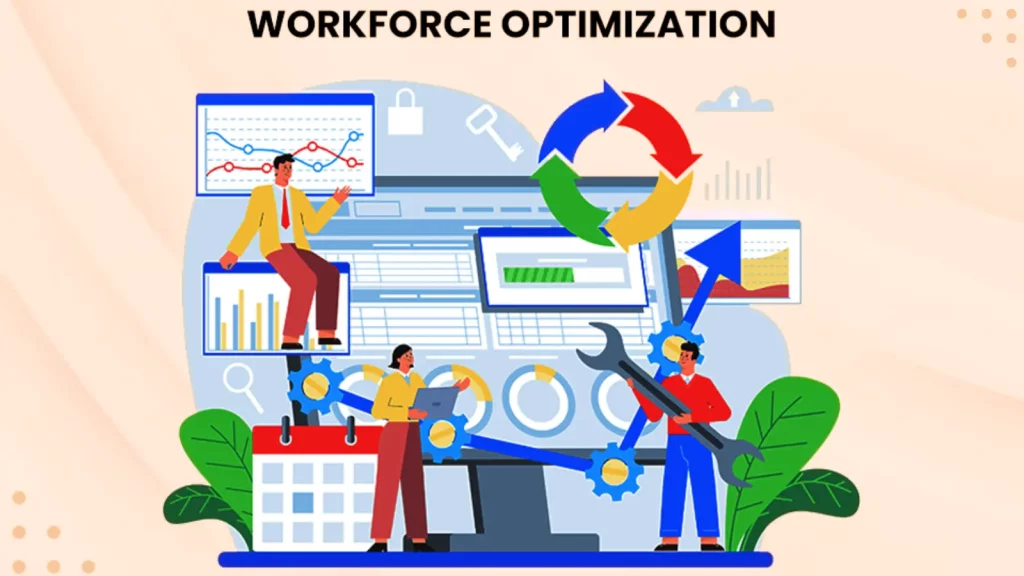In today's fiercely aggressive organization landscape, increasing a proper edge is more essential than ever. One route to achieving this really is through data-driven workforce optimization. By leveraging the substantial amounts of knowledge available these days, companies can fine-tune their workforce to be better, productive, and arranged with long-term company goals. This process isn't only for large enterprises; it's similarly valuable for little and medium-sized firms trying to maximize their resources.
Understanding Workforce Optimization
Workforce optimization involves using knowledge analytics to improve the performance and output of employees. By considering numerous metrics such as for instance time management, performance degrees, and work satisfaction, organizations may identify parts for improvement. This data-driven approach provides for more educated decision-making, ensuring that methods are given effectively and that employees are put for success.
For example, an organization might use employee performance knowledge to recognize top performers and analyze what pieces them apart. These details can then be utilized to produce instruction applications that support different workers reach related quantities of performance. The key is to use data to operate a vehicle continuous development, as opposed to counting on gut feelings or dated methods.

The Role of Information Analytics
Data analytics plays a critical position in workforce optimization. By obtaining and examining data from numerous resources, organizations can get ideas into worker performance, diamond, and over all productivity. This information can be used to create step by step studies and visualizations that spotlight trends and designs, rendering it simpler to identify areas for improvement.
For example, by considering time-tracking knowledge, a business might discover that specific tasks are using longer than expected. These records can then be used to improve operations or offer extra education to employees. Similarly, data on employee involvement might help recognize factors that contribute to job pleasure, enabling companies to implement improvements that increase morale and reduce turnover.
Great things about a Data-Driven Strategy
Adopting a data-driven method of workforce optimization presents numerous benefits. For starters, it enables businesses to make more educated conclusions, lowering the risk of costly mistakes. By basing choices on difficult knowledge as opposed to instinct, businesses can assure that they're allocating sources in the most truly effective way possible.
Another benefit is increased transparency. When employees realize that choices are being created centered on information, they're prone to confidence the method and sense confident within their roles. This may lead to higher quantities of engagement and productivity, as personnel sense appreciated and supported.
Eventually, a data-driven approach might help organizations keep ahead of the competition. By constantly monitoring and increasing workforce performance, organizations may conform to adjusting market conditions and stay agile in the face area of new challenges. This proper benefit can be the huge difference between success and disappointment in today's fast-paced company environment.
Useful Tips for Applying Workforce Optimization
To effectively implement workforce optimization , businesses need to begin with a clear plan. This involves placing unique objectives and determining the main element metrics which will be applied to evaluate success. Additionally it is important to involve personnel in the act, as their feedback can provide important insights and help guarantee buy-in.

Next, organizations require to invest in the right tools and technologies. This could contain time-tracking computer software, performance administration programs, and information analytics platforms. By adding these instruments, organizations may obtain and analyze information more proficiently, providing a good base for decision-making.
Eventually, it's vital that you foster a culture of constant improvement. This implies frequently reviewing data and making modifications as needed to ensure workforce optimization initiatives are containing the desired results. By staying committed to the process, organizations can open the entire potential of the workforce and obtain a strategic advantage.
To conclude, data-driven workforce optimization is really a effective instrument for achieving strategic success. By leveraging information analytics to boost worker performance and involvement, organizations could make more educated decisions, boost productivity, and keep ahead of the competition. For firms seeking to maximise their assets and gain a competitive side, adopting a data-driven strategy is not merely an option—it is a necessity.
